World War 1 was four-year-long combat that started on 28 July 1914 and ended on 11 November 1918. A significant part of the world was involved in the war, forming two major alliances.
Throughout most of the war period, the principal belligerents were the Ottoman Empire, Germany, Austria-Hungary, and Bulgaria as the Central Powers and Great Britain, France, Russia, Italy, and the United States as the Allied Powers.
The gruesome combat resulted in almost 40 million casualties. Military battles and attacks accompanied by genocides and diseases induced many civilian and infantry deaths.
Conditions like starvation and famine also prevailed throughout the war, and non-combatants suffered just as much due to turbulence in the global economy.
Although an immediate originator of the war was the assassination of Archduke Franz Ferdinand of Austria-Hungary, several other existing factors instigated the global conflict.
Militarism, Alliances, Imperialism and Nationalism are considered the four main reasons behind the deadly combat. The significantly long period of the war comprised several key events that made World War 1 a critical event in history.
Some important events of the war are discussed hereafter:
Why did Germany enter World War 1?
Content
Sided with Austria-Hungary and the Ottoman Empire from the beginning of the war forming the Triple Alliance, the primary German motives to enter the war were the protection of the German Reich in the west and east and the weakening French-Russian alliance.
What was the Turnip Winter?
The Turnip Winter was a period of extreme civilian hardship in Germany from 1916 to 1917 during the ongoing war.
Naval blockade by the British Royal Navy and poor harvest due to lack of resources resulted in the nation being on the verge of starvation and famine.
Who executed the Russian Imperial Romanov family?
The last Roman Emperor Nicholas II and his family, comprising his wife and five children, were executed by the Bolshevik revolutionaries under Yakov Yurovsky on July 16, 1918.
After the February Revolution, the local Bolshevik command shot the family, fearing that the White army would free the tsar.
25. Assassination of the Austro-Hungarian heir (June 28, 1914)
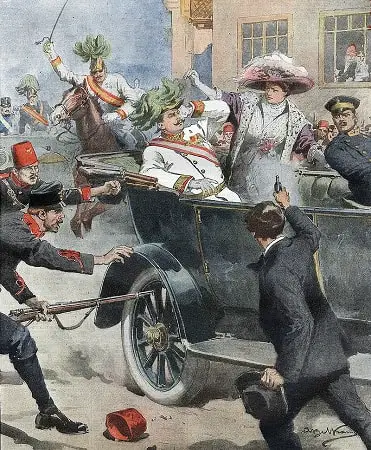
The instant trigger that subsequently brought about World War 1 was the saddening event of Archduke Franz Ferdinand – the Austro-Hungarian throne and Sophie’s heir’s assassination.
The presumptive heir and wife were shot while driving through the city of Sarajevo by a Bosnian Serb Gavrilo Princip.
The key objective behind the assassination was to liberate Bosnia and Herzegovina of the Austro-Hungarian governance and establish a common South Slav state. Regardless of this political purpose, the killing gave rise to the July Crisis, leading to World War 1.
A group of six assassins, who were a part of the student revolutionary group Young Bosnia, was behind the plotting and murder. In June, the heir faced a failed assassination attempt on this planned visit to Bosnia.
One of the assassins tried to bomb the car carrying Archduke and his wife, but the explosive bounced off the folded-back convertible cover to the street and blew up.
This unsuccessful bombing created tension and discomfort for the heir, but the worst awaited Archduke to return from the Town Hall. Princip planned a positioning to attack the heir on learning about the failed attempt while on his return trip.
The assassin waited in front of a food shop near the Latin Bridge, and unfortunately, the heir’s driver unknowingly stalled the vehicle very close to Princip while putting the car in reverse gear.
This gave Princip the right opportunity to shoot Archduke and his wife at a close shooting range with nearly negligible chances of missing. The heir and his wife died by 11:30 am on June 28, 1914.
All the assassins were eventually arrested and sentenced. The murder precipitated widespread shock across the European royal houses and played the role of the match that lighted the fire called World War 1.
24. Austria-Hungary declares war on Serbia (July 28, 1914)
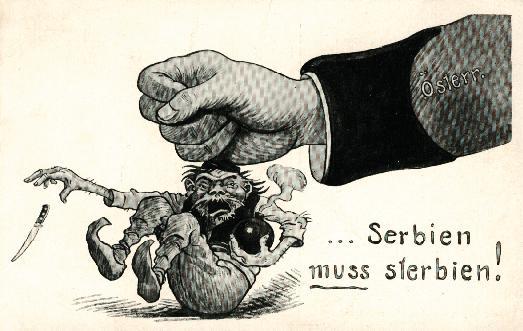
The assassination of the presumptive heir of Austria-Hungary induced a strain in the relationship between the said nation and Serbia. On July 23, 1914, Austria-Hungary sent an ultimatum to Serbia, marking the beginning of the ‘Black Week.’
The Austro-Hungarian ultimatum consisted of conditions laid before Serbia to accept and formally condemn the ‘dangerous propaganda’ against Austria-Hungary.
Serbia was given only 48 hours to respond on whether it would comply with the terms. The response by Serbia is considered satisfactory as Serbia agrees to most but not all terms mentioned.
Following the injunction on July 24, 1914, Austria-Hungary entirely broke diplomatic relations with Serbia, and the latter mobilized, expecting a declaration of war anytime then.
On July 25, 1914, Austria-Hungary summoned its military troops, and Russia partially mobilized. This mobilization period comprised many pre-war discussions and decisions regarding the alliance and involvement of the participating nations at war.
Finally, at 11:00 pm on July 28, 1914, Austria-Hungary declared war on Serbia via a manifesto signed by emperor Frank Joseph I. The first World War 1 was not fired until 01:00 pm the next day.
The capital city of Serbia, Belgrade, was bombed by the Austro-Hungarian forces on July 29, 1914. A day later, general mobilization was announced in Austria-Hungary as other European nations prepared for the approaching global conflict.
23. Germany declares war on Russia (August 1, 1914)
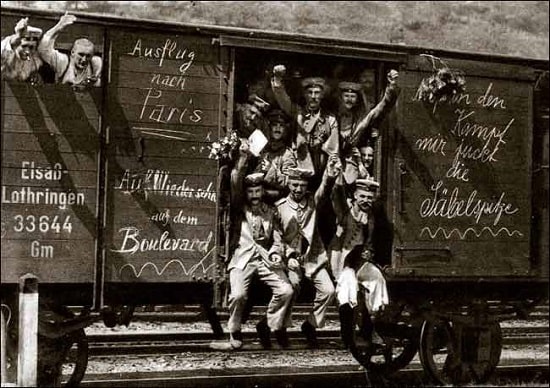
The assurance of military support that Germany had provided Austria-Hungary before the outbreak of the war was not an unknown event.
After a few days of the Austro-Hungarian declaration of war against Serbia, German Emperor Kaiser Wilhelm II and Russian Emperor Czar Nicholas II exchanged telegrams.
After different opinions on both nations’ take on the war, the German Emperor suggested Russia remain a spectator of the Austro-Serbian war and not involve Europe in the ‘most horrible war she ever witnessed.’
It seemed like Germany was acting as a mediator between Russia and Austria-Hungary. Even though the leaders preached about maintaining peace, both emperors took mobilization measures.
On July 30, 1914, Germany sent Russia an injunction to halt the mobilization, or else the former nation would initiate active mobilization, subsequently leading to war.
After no response from Russia by four o’clock the following day, the German civilian and military leaders finally signed mobilization orders.
The final telegrams exchanged between Nicholas and Wilhelm comprised assurance provided by the former to the latter that their mobilization did not indicate a war in any way and considerably ignorant response to the assurance by the latter.
The exchange was followed by Germany declaring war on Russia on August 1, 1914. Many nations declared their neutrality simultaneously; Italy, Denmark, Sweden, and Norway.
22. Germany-Ottoman Alliance and German occupation of Luxembourg (August 2, 1914)
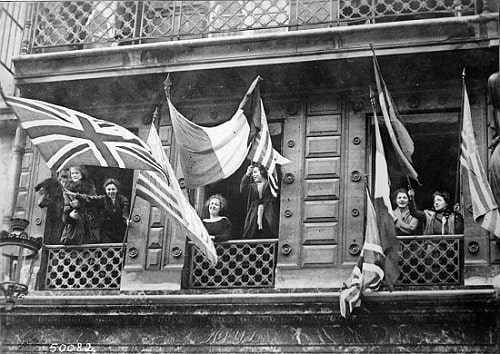
Following World War 1, Germany declared war on Russia shortly after, and the Ottoman Empire had yet to enter the war. On the day following the declaration of war, Germany secretly signed a treaty of alliance with the Ottoman Empire for shared benefits.
The Germany-Ottoman Alliance was a pact initiating the joint efforts to aid wartime support for both parties.
The Ottoman Empire, which was in ruinous shape due to prior conflicts, needed assistance to recover and gain power. On the other hand, Germany would gain safe passage to the neighboring British colonies.
After numerous major nations showed apparent disinterest in allying with the Ottoman Empire, the nation formed a secret alliance with Germany on August 2, 1914. High-ranking officials of both belligerent nations ratified the pact.
The same day Germany invaded and occupied Luxembourg. After Germany put the Schlieffen Plan into action, which was designed to allow Germany to wage a successful two-front war, the occupation of Luxembourg was inevitable.
Germany violated Luxembourg’s neutrality through the unauthorized use of the Troisvierges station since it was a transit point for the German troops to get to France.
This infringement was followed by Germany launching a full-fledged invasion of Luxembourg and advancing towards the nation’s capital city.
The significantly outnumbered troops at the Luxembourg capital were ordered not to resist, and despite a few protests, Germany obtained occupation of the nation.
The German Chancellor Theobald von Bethmann Hollweg justified the occupation as a military necessity stating that France had been taking steps to do the same.
21. Battle of the Frontiers (August 7, 1914 – September 13, 1914)

Shortly after World War 1 began, a series of battles were fought along the eastern frontier of France and in southern Belgium that concluded after over a month of significant attacks and offenses.
After nations like France, Belgium, and the United Kingdom had entered the war and alliances had been formed, the battle at the frontier began with the Battle of Mulhouse.
This first French offensive attack was planned to engage maximum German troops to assist the French forces.
After initial success in occupying Mulhouse, the French troops faced a counter-offensive attack by the Germans who re-occupied the city, resulting in the French retreat to Belfort.
The Battle of Halen began as a cavalry battle between the German troops led by General Georg von der Marwitz and the Belgian forces commanded by General Léon De Witte.
After Belgium severed its diplomatic relations with Germany, the German invasion of Belgium began on August 4, 1914.
Although the battle was concluded with a Belgian victory, it did not prove as rewarding to its military strategy since Germany’s invasion of major Belgian cities followed soon after.
Another major battle during this series was the Battle of Lorraine, fought between the Germans and French.
Both belligerents plotted majorly offensive attacks as the war began, and the French came up with Plan XVII, which involved charging through Lorraine and Alsace into Germany. The battle ended with a German victory and a French retreat.
Similarly, other battles between the German and French forces during this period were the Battle of Ardennes and the Battle of Charleroi. Both resulted in repeated German victory providing the German military force a sense of dominance over the Allied Powers.
Another significant battle followed was the Battle of Mons, with the German forces combating next to the British Expeditionary Force (BEF).
Although the British forces caused notable damage to the German military troops, they were forced to retreat due to the unexpected withdrawal of the French troops and a comparatively larger German force.
The battles resulted in some remarkable German victories and the Great Retreat. Other major battles like the First Battle of Marne at the Western Front followed the battle at the frontiers.
20. The First Battle of Ypres (October 19, 1914 – November 22, 1914)
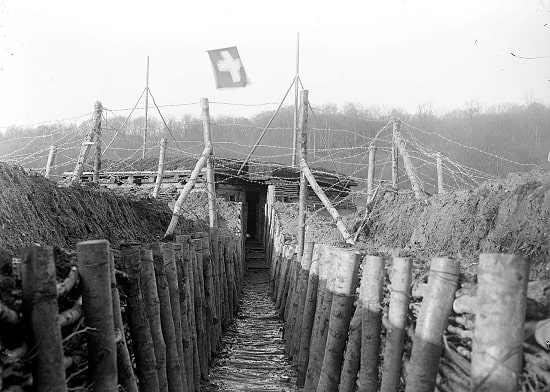
The First Battle of Ypres was fought around Ypres, Belgium, among four significant belligerents of the first world war. The German, French, Belgian, and British forces fought right after the Race to the Sea.
The battle was a part of the First Battle of Flanders, and the timeline of this combat has been divided into five key stages. The conflict collectively lasted for a month and resulted in many casualties.
The initial stage of this battle was the German offensive attack launched by General Erich von Falkenhayn to capture Ypres and Kemmelberg. The encounter went on from October 19 to 21 after the 4th and 6th Army advanced towards the invasion of the Belgian cities.
The Battle of Langemarck, October 21 to 24, took place consecutively after the initial attack by the German forces.
The left flank of the British Expeditionary Force began moving towards Menen and Roeselare in the West Flanders of Belgium for defense against the Germans approaching.
The Germans successfully pushed back the French cavalry at Ypres and advanced the attack against the BEP at Menen further south.
The Battle of Gheluvelt began with the German motive of capturing the village of Gheluvelt due to its unavoidable location on the road from Menen to Ypres.
On October 31, 1914, German forces initiated the plot through ferocious artillery bombardment and rapid infantry advance and broke the defensive lines significantly.
Although outnumbered, the British troops defending Gheluvelt managed to recapture the village through a strategic counter-attack.
Combat among the French and Belgian troops against the German forces continued. On November 11, 1914, the Battle of Nonne Bosschen began, which was the last attempt by the German forces to pierce British lines around Ypres.
A successfully launched attack from Messines to Herenthage, Veldhoek woods, Nonne Bosschen and Polygon Wood was later disrupted by the strong defense of the British troops.
A few surprise German attacks and British line reorganizations comprised the local event from November 12, 1914, to the conclusion of this battle series.
19. Battle of Falkland Islands (December 8, 1914)
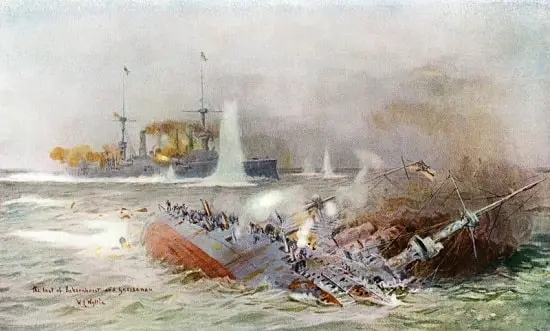
The Battle of Falkland was a naval action between the British and German forces consecutively after the victory of the Germans in the last battle between the naval forces of the same nations, the Battle of Coronel.
After facing a significant defeat off the coast of central Chile, the British prepared and waited to execute an attack at the right time and take down the German cruiser squadron.
German naval officer Maximilian von Spee, a powerful German squadron commander, proposed to raid the British supply base at the capital of the Falkland Islands, Stanley.
The raid appeared unnecessary as the squadron was already at maximum capacity, and therefore, the idea was objected to by many captains.
Despite the opposition, Spee proceeded with the attack, and the British were left surprised by the gunfire from a completely unpredictable direction.
The outnumbered and outgunned German squadron, having lost the chance to attack any British ship, withdrew towards the open sea.
British ships left the port for a subsequent attack. On reaching a close range, the British began firing, and the Germans attempted to engage the British ships as there was no chance of outrunning them.
Germans suffered significant damage by this naval combat as only two of eight ships managed to escape the British attack.
The German East Asia Squadron ceased to exist, and commerce raiding ended after this battle.
18. Unrestricted submarine warfare initiated by Germany (February 4, 1915)
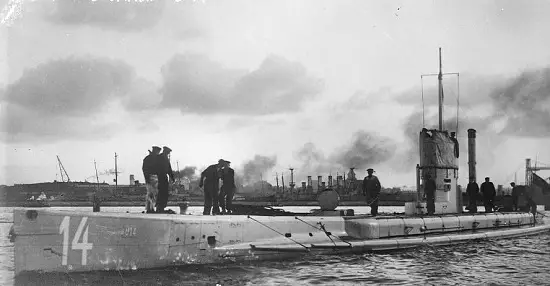
Submarine warfare was a significant part of World War 1. It was the first time that submarines were used as weapons in a war.
The Atlantic U-boat Campaign was a major naval conflict between the German submarines and the Allied naval forces.
The action began shortly after the outbreak of the first world war on August 8, 1914, and was carried out on the seas around the British Isles, the North Sea, and the coast of France.
After Britain declared war on Germany on August 6, 1914, the campaign was launched with the dispatch of German U-boats towards the British fleet.
The initial operation was unsuccessful as most U-boats had to return to the base, with a few being destroyed or missing. This failure circulated a belief that these submarines were not dangerous war weapons.
The U-boat gained its first success on September 5, 1914, as it torpedoed and destroyed a Royal Navy light cruiser under Lieutenant Otto Hersing.
On September 15, 1914, a U-boat commanded by Lieutenant Otto Weddigen took three old Royal Navy armored cruisers down, resulting in 1,460 casualties.
The first campaign’s initial success was followed by the attack on British merchant ships, which was the start of the war on commerce.
On February 4, 1914, Germans began unrestricted submarine warfare against the Allied trade. Numerous merchant ships were attacked without any warning causing massive civilian casualties.
370 ships were sunk due to this destructive war weapon during the first year. Counter-measures were brought into action to avoid the mass damage German U-boats were causing which did not prove very effective.
The renewed unrestricted warfare campaign in 1917 caused relevant damage to ships and lives again.
In May 1917, convoys were first introduced and immediately proved their efficiency. The losses to U-boats were significantly reduced, and other effective escort measures were subsequently brought into action.
A little before World War 1, submarine warfare was finally suspended by Germany on October 20, 1914.
17. The Gallipoli campaign begins (February 7, 1915 – January 9, 1916)

The Gallipoli campaign was a prolonged military action initiated by the Triple Entente to weaken the Ottoman Empire’s critical Central Power.
The objective was to take control of the two internationally significant waterways, the Turkish Straits, and expose the nation to Allied attack on its capital Constantinople.
This action was first proposed by the Prime Minister of the United Kingdom, Winston Churchill. The initial plot was a naval attack on Dardanelles using many battleships but a small occupation force.
After the initial planning of this attack, the Russian General Grand Duke Nicholas approached the British to assist them.
Planning continued, and finally, on February 17, 1915, the Allies made their first move when a British seaplane flew over the Turkish Straits to conduct a survey.
Following the survey, two days later, a strong attack was placed on Dardanelles by the Anglo-French task force supported by the British lead ship HMS Queen Elizabeth.
Strong defense by the Ottoman forces made this attack considerably unsuccessful. Churchill commanded the British naval commander, Admiral Sackville Carden, to increase the force of the attack, leading to the commander improvising the plot.
The information about the Ottoman Dardanelles’ forts running out of ammunition gave hopes of victory. The Allies planned to land campaigns to attack the Ottoman forces at the Gallipoli peninsula at ANZAC Cove and Cape Helles.
Several offensive and counter-offensive attacks took place until the final August offensive. The conditions of the peninsula had worsened, and entrenched troops were in a severely unlivable environment.
Due to several unsuccessful attempts to achieve the actual objective of this campaign, it was finally halted, and the Allied troops evacuated the peninsula. Both sides suffered heavy casualties during this extended conflict.
16. Italy declares war on Austria-Hungary (May 23, 1915)
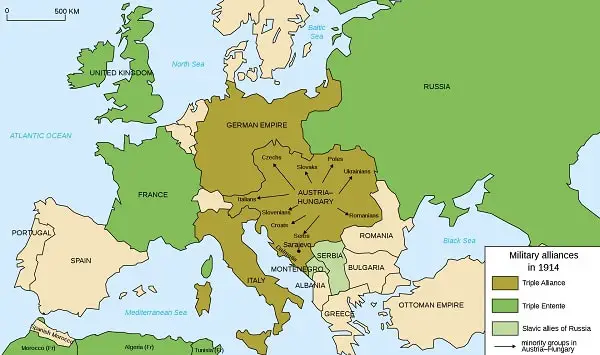
The Triple Alliance treaty was formed between Germany, Austria-Hungary, and Italy in 1882 until 1915, when it was finally revoked.
Despite being a part of this alliance, Italy did not join World War 1 alongside the Central Powers, stating that the alliance was supposed to be on the defensive side, unlike the offensive stance that it was portraying.
Italy had maintained significant diplomatic relations with the United Kingdom and France, among the principal belligerents against the Central Powers.
With Italy declaring its neutrality at war initially, the Triple Alliance was strained. On April 26, 1915, Italy signed a secret alliance treaty with the Allied nations.
The efforts of the Central Powers to get Italy to hold its neutrality went in vain. On May 3, 1915, the nation revoked its decades-long alliance with Germany and Austria-Hungary.
With negotiations to gain territory if victorious, Italy sided with the Allies and initiated its war against Austria-Hungary, aiming to threaten the capital, Vienna, of the latter nation.
Following its entry into the war, Italy declared war on the Ottoman Empire, Bulgaria, and Germany. Starting from the First Battle of Isonzo on June 23, 1915, eleven such battles were fought on the Italian front between the Italian and Austro-Hungarian troops.
The Sixth Battle of Isonzo was Italy’s most successful offensive attack when they conquered Monte Sabotino and Monte San Michele, pushing the Austro-Hungarian defensive lines further away.
In the aftermath of the war, Italy had a massive debt on its shoulders which was completely paid off only by 1970. The nation hoped the previously decided negotiations of territorial gains would be fulfilled.
It received some portions as promised, but the Italian diplomats’ demands were not taken into account.
This caused a strained relationship between Italy and the Allied nations, which led to the Biennio Rosso social conflict and the rise of fascism in Italy.
15. Central Power invasion of Serbia (October 7, 1915 – December 4, 1915)
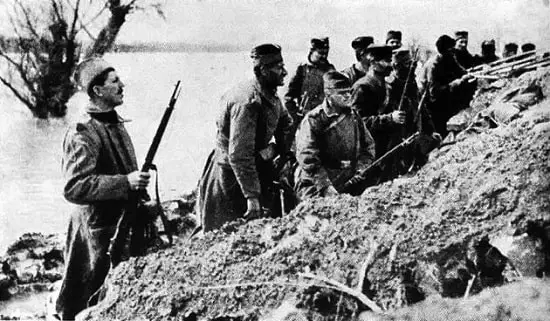
The Serbian campaign began shortly after World War 1 on July 28, 1914. It resulted from the assassination of the presumptive heir to the Austro-Hungarian throne that led to Austria-Hungary declaring war on Serbia.
With the assistance of other nations of the Central Powers, a full-fledged attack was launched on Serbia by shelling its capital city the following day. The campaign began with three Austro-Hungarian offensives to Serbia that were relatively unsuccessful.
The Battle of Cer, Battle of Drina, and Battle of Kolubara were the initial attacks on Serbia, resulting in considerable casualties but no change in border whatsoever.
After these unsuccessful attempts, the campaign was re-planned the following year. A significant advantage of invading Serbia would be a direct railway link from Germany to Austria-Hungary to Istanbul and beyond, which would assist the Central Powers in providing necessary resources to the Ottoman Empire.
With Bulgaria entering the war beside the Central Powers, the invasion campaign was relaunched on October 7, 1915.
The Austro-Hungarian and German forces initiated the attack by crossing Drina and Sava rivers and entering the capital city of Serbia, Belgrade.
The Serbian defense was taken down on October 9, only two days after the attack. Bulgaria finished mobilizing and attacked Serbia, starting the Morava Offensive Operation.
The offensive operative began on October 14, 1915, and continued until November 9, 1915. The Bulgarians penetrated up to 90 kilometers into the Serbian territory and successfully seized fortified areas of Pirot, Niš, and the valley of the Morava River.
Another breakthrough by the Bulgarian forces was through the Ovche Pole Offensive, intending to occupy the Vardar River Valley and cut the railway lines that connected Serbia to other Allied nations.
A joint attack by the Austro-Hungarian, German and Bulgarian forces called the Kosovo Offensive Operation was the final offensive of the Serbian Campaign.
The key objective was to surround and destroy whatever remained of the Serbian military forces.
Even though the operation was a significant victory for the Central Powers as they successfully invaded Serbia, over 400,000 Serbians retreated to the Albanian Alps and beyond.
14. The Battle of Verdun (February 21, 1916 – December 18, 1916)
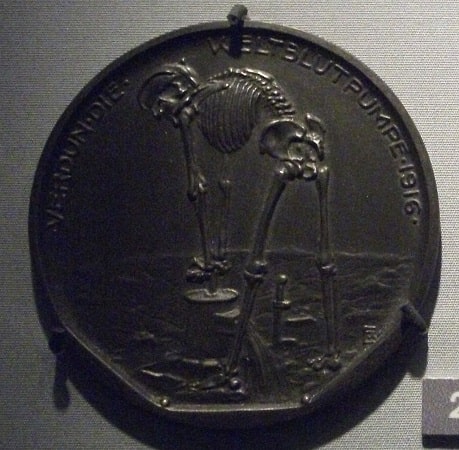
One of the most significant battles on the Western Front during World War 1 was the Battle of Verdun. The fighting was nine months, three weeks, and six days long, making it the most prolonged first world war battle.
It took place in the hills of the city of Verdun in France between the German forces and the French army. The engagement, which was supposed to begin on February 12, was delayed due to unfavorable weather conditions.
On February 21, 1916, a ten-hour-long artillery firing occurred when the Germans ferociously bombarded the forts and Verdun. By the following day, the Germans had managed to penetrate 5 kilometers into the woods at the end of Flabas.
German offensive attacks continued aggressively, and some French counter-attacks were also launched. General Erich Von Falkenhayn regarded France as the only strong support the British held.
He stated that the objective of this offensive attack was to inflict heavy casualties on the French military. The German troops’ advancement was not significant, and the French repulsed the offensive quite well.
By March, the German had only captured the Douaumont village, the lower crest of Le Morte Homme, and some other French barrages. Minor victories continued, but massive deaths and casualties accompanied them.
On October 20, 1916, the French began their offensive attack to re-capture whatever was lost initially.
With an aggressive artillery bombardment and rapid advance, the French troops recaptured most of what had been occupied by the Germans, forcing the latter to evacuate and retreat.
Other than a few local attacks and counter-attacks to the French offensive, the Germans did not conduct any other primary offense.
Subsequently, the Battle of Verdun died down with a significant loss of lives and an unmistakable French victory.
13. The Battle of Somme (July 1, 1916 – November 18, 1916)
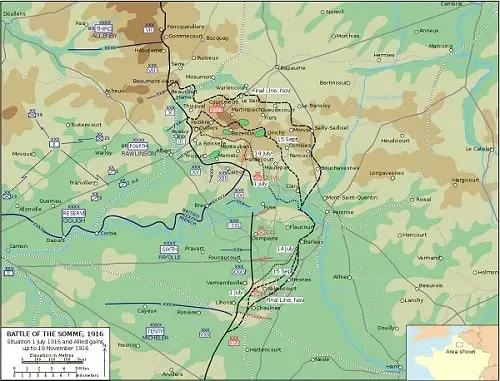
The Battle of Somme was one of the deadliest and most destructive battles fought during the first world war. The engagement took place for 140 days between the British and French troops against the German forces along the river Somme.
The planning and preparation of troops for this battle were already happening during the ongoing battle at Verdun.
The first day of the battle at Somme was the beginning of the Battle of Albert, a part of the Battle of Somme.
The French and British aggressively attacked the German troops and gained total success and control over both river banks. Almost 10,000 – 12,000 German men lost their lives during the attack, and about 20,000 British soldiers died.
Following the Battle of Albert up to July 13 was the Battle of Bazentin Ridge. This was another offensive by the British Fourth Army to capture some villages of Somme.
The battle occurred from July 14 to 17 and was a relatively successful offensive attack, although capturing the High Wood failed.
Another offensive conducted consecutively after the attack by the Fourth Army was the Battle of Fromelles.
The British and Australian troops attacked on July 19 and 20 to take advantage of any weakened German troops.
The inexperienced Allied troops and underestimated German defense forces made the attack unsuccessful, and the prior nations suffered significant casualties.
Numerous other offensives by the Allies were conducted during this battle. The Battle of Delville Wood, Battle of Pozières, Battle of Guillemont, and the Battle of Ginchy were the major Allied attacks during the second phase of Somme.
The last three months of the battle comprised some primary British operations like the Battle of Flers-Courcelette, the Battle of Morval, the Battle of Thiepval Ridge, and the Battle of the Ancre.
The Battle of Somme was significantly costly, and both the offenses conducted by the Allies and the defense put forward by Germany were notable. A conclusion as to which party was victorious couldn’t be drawn.
12. The United States declares war on Germany (April 6, 1917)
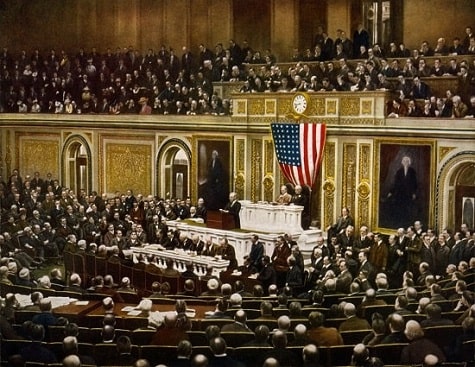
The United States declared and maintained its neutrality for over two and a half years of World War 1.
Although the nation did not participate in the war directly during this period, it was clear that the nation provided indirect support to the Entente Powers through massive loans from its banks.
The inclination toward the Triple Entente came from America’s overall negative view of Germany even before the war.
With the Allies’ naval blockade strategy against Germany, the latter had already resumed its unrestricted submarine warfare. The German U-boats started attacking the US merchant ships in the North Atlantic.
This caused outrage among the Americans, and Congress voted to declare war on Germany on April 6, 1917, after a year-long effort by American President Woodrow Wilson.
Since most belligerent nations had been in numerous battles and inflicted heavy losses in all sorts of resources, America had a significantly new and robust military force.
With the nation’s entry into the war, the exhausted Allied forces greatly welcomed the US military forces that arrived at the Western Front at 10,000 soldiers a day.
America subsequently declared war on Austria-Hungary on December 7, 1917, but it did not make any other declarations of war against other Central Powers.
The Americans played a crucial role in World War 1 because they acted as a solid final offensive against Germany and the Central Powers.
11. The Battle of Arras (April 9, 1917 – May 16, 1917)
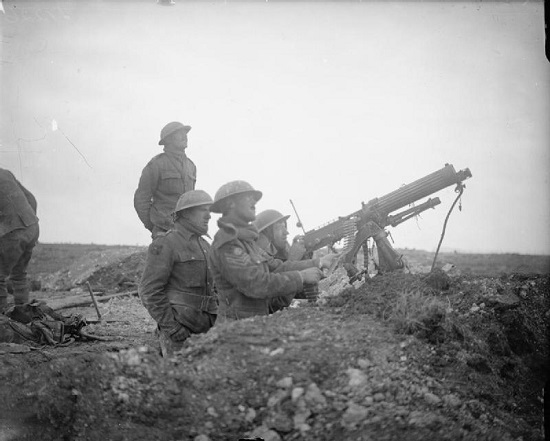
The Battle of Arras was another British offensive against the German defenses near Arras’s French city. It was another major battle on the Western Front, and it became a costly stand-off with massive casualties on both sides.
Still searching for a breakthrough at the Western Front after several significant offensive battles, the British and French decided that this battle was necessary to end the stalemate.
The preliminary battle phase had already begun on March 20, 1917, when the Allied forces started heavy bombardment and a major assault on the German front lines. Following this initial attack was the First Battle of the Scarpe.
This was the first offensive attack in the Battle of Arras from April 9 to 14. The British forces attacked the east and north of the city to infiltrate the Monchyriegel, which was a significant trench to the German defenses.
While the British gained notable success in the first offensive, the Canadian Corps placed another meaningful attack at Vimy Ridge from April 9 to 12.
The Battle of Vimy Ridge was a short yet carefully planned assault in which the attacking troop could advance 3,700 meters into the German defense lines and capture the crest of the ridge.
Following these attacks was the Second Battle of the Scarpe on April 23 and 24, when the British troops attacked aggressively.
By the end of this engagement, the British had captured Guémappe, Gavrelle, and the high ground overlooking Fontaine-lès-Croisilles and Cherisy.
The Battle of Arleux and the Third Battle of the Scarpe were other offensives by the British during the second phase of this battle. The final phase began with the First attack on Bullecourt, which attempted to penetrate the Australian forces’ German defense lines.
After this attack was considered unsuccessful, the Germans followed up with an offensive attack and managed to penetrate the Australian frontlines and occupy the village of Lagnicourt.
The final offensive attack was the Battle of Bullecourt, from May 3 to 17. After the unsuccessful attempt by the Australian patrols, the British initiated this assault and were able to chase the Germans out of Bullecourt but through considerable losses.
This battle comprised the most extended advance through enemy lines rapidly by the British forces during the starting days, which was exceptional.
Although the territorial gain would make it seem like a British victory, the number of casualties inflicted, and the failure of some significant offensives make it challenging to conclude.
10. China declares war on Germany and Austria-Hungary (August 14, 1917)

During World War 1, China ended its neutrality and simultaneously declared war on Germany and Austria-Hungary. The nation formed an apparent alliance with the Allies, to whom it had already been supplying laborers since 1916.
After reluctantly accepting an improvised ultimatum of demands 13 sent by Japan in May 1915, the nation initially could not invite war to itself at any cost.
On February 17, 1917, when a French cargo ship carrying 900 Chinese laborers was destroyed by a German U-boat and over 500 were killed, China completely severed diplomatic ties with Germany.
The key objective of China in entering the war was to save itself a spot on the post-war bargain table and regain control over the territory lost due to the intimidating Japanese influence.
No Chinese troops were part in combat during the first world war, but the nation continued sending many laborers to other Allied nations.
In the aftermath of the war, the Chinese delegates demanded that the Shandong Peninsula occupied by Japan be returned to China, among other conditions as well.
This was refused, which led to the uprising of Chinese nationalism resulting in the May Fourth Movement. Due to this pressure from the public, the Chinese government did not sign the Treaty of Versailles at the signing ceremony.
9. Armistice between Russia and the Central Powers (December 15, 1917)
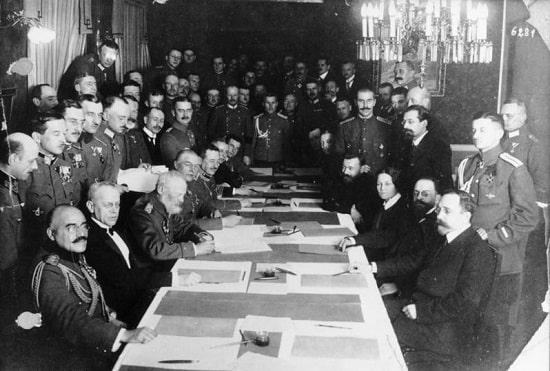
After four years of ferocious fighting, on November 26, 1917, Russia sent diplomats with a white flag towards the line of the Germans to negotiate for a possible ceasefire.
The appeal was accepted, and negotiations took place at the Central Powers Armies’ headquarters in Brest-Litovsk.
Following a local ceasefire agreement on December 4 at the village of Soly, a complete ceasefire bounding all Central Powers was signed at the agreed headquarters the following day.
Other Allied nations did not respond to Russia’s approach to having an official negotiation with the Central Powers.
The Central Powers prepared a team of five Germans, four Austro-Hungarians, three Ottomans, and two Bulgarians, whereas Russia organized a delegation team of twenty-eight.
After three days of discussions at Brest-Litovsk, on December 15, a truce for 30 days was agreed upon, which would be renewed automatically after the period was over unless prior notice was provided.
An agreement to begin the negotiation of a peace treaty was also considered. With this truce, Russia exited the war, but the fighting would resume shortly before the Treaty of Brest-Litovsk was signed on 3 March 1918, and Russia finally made peace.
8. President Woodrow Wilson presents the Fourteen Points (January 8, 1918)
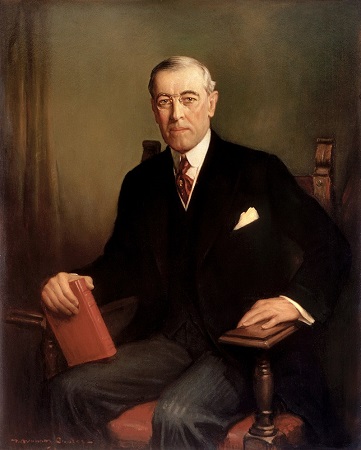
The Fourteen Points the President of the US highlighted during a speech on January 8, 1918, were the conditions to be used for peace negotiations.
The speech played a significant role in the perception of the belligerents toward peace. Wilson also used it as a basis for negotiation during the Treaty of Versailles.
The speech was named the Fourteen Points and comprised a set of diplomatic points to be considered to establish global peace.
The speech’s relatively diplomatic points were the end of all private alliances, equality in trade, and reduction of national armaments.
Significant points like the release of all French territory, evacuation and territorial restoration of Romania, Serbia, and Montenegro, and erection of an independent Polish state followed up.
Although some nations doubted the applicability of the Wilsonian idealism, these points were primarily distributed among the belligerents to inflict negotiation and peace.
Even though the conditions in the treaty that ended the first world war were significantly different from Wilson’s Fourteen Points, these points caused a considerable commotion in the nations that had been engaged in the war directly or indirectly for four years already.
7. German Spring Offensive (March 21, 1918 – July 18, 1918)
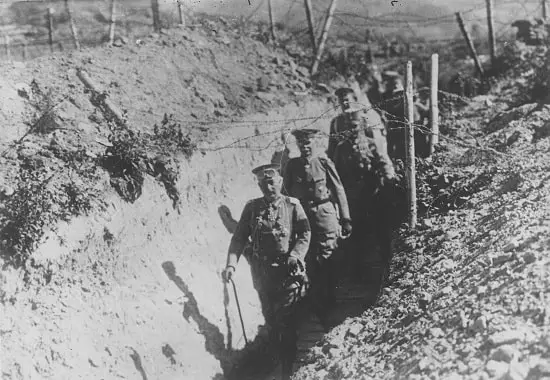
The German Spring Offensive was plotted and initiated by Germany as a final attempt to break through the Allied lines on the Western Front and grasp their chance of victory.
The offensive was planned to precede the full deployment of soldiers by the United States. The objective was to penetrate the British lines and defeat the troops there to armistice terms with the French.
With about 50 divisions being freed by the Russians following their withdrawal from the war with the Treaty of Brest-Litovsk, Germany gained a temporary advantage.
Four primary offensive operations were launched consecutively to outflank the British troops from Somme River.
Operation Michael was Germany’s first and most significant offensive attack against the British Fifth Army and the right-wing of the Third Army.
Despite the Allies being aware of the attack, the attack’s power shocked them.
The British successfully pushed the British lines further, leading them to advance rapidly away from their supply base.
The first operation was called off on April 5 after the German troops suffered extreme exhaustion and the arrival of the US military stiffened the defense. On April 9, Operation Georgette was initiated against the Portuguese Expeditionary Force.
The attack seemed pretty successful at first as the Germans had advanced quite ahead, but the British and French counterattacks pushed them further away again due to logistics problems.
Operations Blücher–Yorck and Gneisenau were the other offensives launched by the Germans, gaining them some advancement but massive casualties.
A final offensive attack was conducted on July 15, 1918, to capture Allied reserves and penetrate their lines. The total objectives of this attack were not met due to the vigorous defense showcased by the French troops.
Significant territorial gains were achieved by the end of this operation. Still, it was not a complete German victory as the troops were severely exhausted and exposed and casualties were very high.
6. Battle of Cantigny (May 28, 1918)
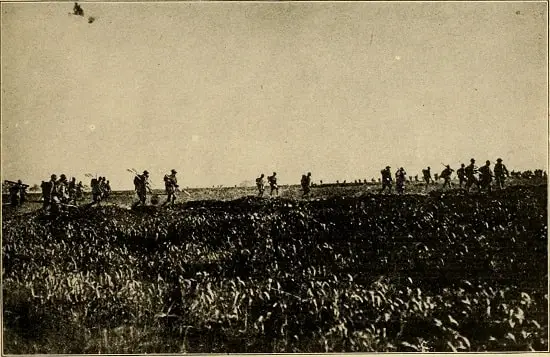
The first major American offensive of World War 1 undertaken by the most experienced American division was the Battle of Cantigny.
The main motives of this attack were to reduce a German-made salient and establish confidence among the French.
The village of Cantigny was located at a high ground on the Somme River, surrounded by woods making it the perfect spot for observation of the German artillery. The capture was quick, assisted by an adequate French air cover.
A few German counter-attacks were launched, successfully repulsed by the American troops, and the salient was also reduced during that period. The American front was expanded by almost a mile.
These achievements were overshadowed by the Third Battle of the Aisne, which was a part of the German Spring Offensive.
Heavy casualties were inflicted, but the Americans held their ground. The performance of the American troop during this engagement assured the French that these troops could be trusted with the protection of the defense line against the German offensive to Paris.
Although a comparatively more minor victory, the result of this battle had significant impacts.
The Germans were snatched off of a significant observation spot, Pershing’s argument about maintaining an independent U.S. command was supported, and the strength of newly entered American troops was showcased.
5. Hundred Days Offensive (August 8, 1918 – November 11, 1918)
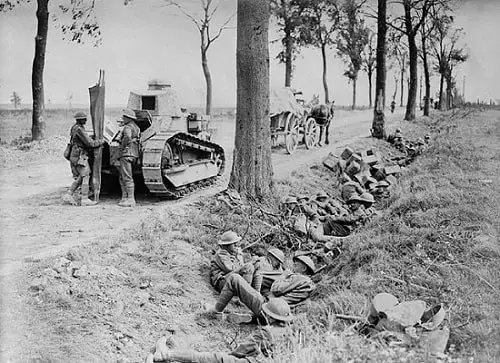
The Hundred Days Offensive was a series of substantial Allied offensives on the Western Front that ended World War 1.
Following the German Spring Offensive, this attack reversed the achievements of the Central Powers during the former offensive.
The consecutive victories that the British could not respond to were one of the primary reasons this led to a four-year-long war.
The Battle of Amiens was the first operation initiated on August 8 with a massive Allied force, led by the British Fourth Army, attacking the German lines to the south of the Somme.
The surprise factor was a significant advantage to the Allies as the Germans were unaware of the force of this attack. The Allies had pushed through 24 kilometers into the belligerent lines on the first day itself.
The Second Battle of Somme, a 100 operation, was a series of successful counter-offensives to the German Spring Offensive.
On September 26, 1918, Allied forces began attacking Meuse-Argonne, the war’s final offensive. Germany had no option other than to accept its defeat.
Rearguard actions were fought until the Armistice of November 11, 1918, at 11:00 a.m. This final campaign resulted in massive casualties, just like the numerous previous offensives carried out.
4. Armistice between Germany and the Allies (November 11, 1918)
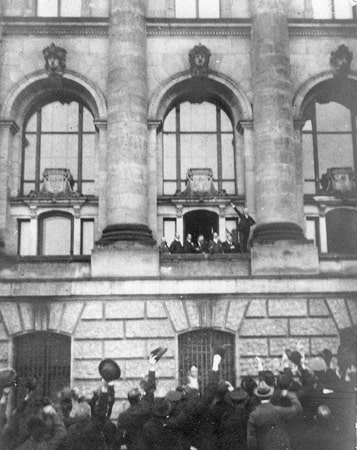
The Armistice of 11 November 1918 was the truce signed by the Allies with their only remaining opponent Germany at Le Francport in France.
With Bulgaria, the Ottoman Empire, and Austria-Hungary exiting the war before this armistice, this final agreement ended World War 1.
With the United States entering the war on the Allied side, there was evident domination in both sides’ military forces.
The Hundred Days Offensive brought about a series of notable Allied victories crushing the Germans down, both force-wise and morale-wise.
Along with battlefield exhaustion, a critical food shortage due to the naval blockade was also inflicting severe concerns among the German civilians.
The armistice was a hurried and desperate attempt by the Germans to exit the war. They were provided with conditions and demands with only 72 hours to respond.
After only some negotiation, Germany agreed to most of the Allied demands because the nation could not refuse to sign the armistice.
The armistice was officially agreed upon at 5:00 a.m. and began at 11:00 a.m. on November 11, 1918. The occupation of Rhinestone by the American, Belgian, British, and French armies took place shortly after this truce.
3. Paris Peace Conference (1919 – 1920)

The Paris Peace Conference was the official meeting to negotiate and present the peace terms after World War 1.
The victorious Allies drew five treaties that rearranged the territorial distributions of Europe and parts of Asia, Africa, and the Pacific Islands and also imposed financial penalties.
With Britain, France, Italy, and the United States considerably dominating the conference, Germany and other defeated nations were left voiceless throughout the period almost wholly.
This uncontrolled domination gave rise to significant resentments between the two parties that continued for decades and became one of the causing factors of World War 2.
Woodrow Wilson was used as a basis to draw the conditions of German surrender during the conference. With diplomats of 32 countries and nationalities, some highly significant decisions were taken regarding formulating peace globally.
The formation of the League of Nations was one of the critical results of the conference.
The five peace treaties focused on the imposition of the reparations on Germany, awarding German and Ottoman overseas possession majorly to Britain and France, and drawing clear national boundaries.
The victorious nations, often regarded as the Big Four, had met 145 times informally during the conference and took all the major decisions regarding the same.
2. Treaty of Versailles (June 28, 1919)

Among the five peace treaties drafted during the Paris Peace Conference, the most important was the Treaty of Versailles.
This treaty officially ended the war between Germany and the Allied nations precisely five years after the assassination of Archduke Franz Ferdinand and the outbreak of World War 1.
Although the battles had ended officially after the armistice, it took additional time to draft and negotiate the conditions of peace among the belligerents.
The treaty was registered by the Secretariat of the League of Nations only on October 21, 1919, almost four months after its official signing in the Palace of Versailles.
The treaty had been presented with a warning that if not signed by Germany, it would result in the resumption of war.
The conditions in the treaty ranged from territorial changes to military restrictions, mandates to reparations to be made, and the guarantee of compliance by the terms.
Both parties, alongside this treaty, had contrasting views regarding the conditions laid forward by this treaty. The Allies considered it lenient and necessary, whereas German nationalists were highly skeptical and disappointed.
The treaty gave rise to great resentment in the Germans against their impositions. The rise of Nazi Germany and one of the most brutal leaders, Adolf Hitler, was influenced by it.
1. U.S. – German Peace Treaty (August 25, 1921)

The rise of this treaty came from the United States Senate’s discontent in ratifying the Treaty of Versailles.
Although the US ratified the treaty on July 21, 1919, the dissatisfaction brought about another peace treaty between the United States and Germany.
The agreement was called the “Treaty between the United States and Germany Restoring Friendly Relations.”
It restored and laid a foundation for cordial relations between the two nations without being strictly supervised and directed by the League of Nations’ terms.
On August 25, 1921, the treaty was officially signed in Berlin and was ratified by both parties on November 11, 1921.
This mutual agreement led to the United States assisting the German government regarding the Treaty of Versailles reparation clause. Diplomatic ties were re-established, and joint decisions were taken regarding matters concerning both nations.
A separate peace treaty between the United States and another principal Central Power was also ratified during the same period.
In Vienna, the U.S. – Austrian Peace Treaty was signed on August 24, 1921, and the U.S. – Hungarian Peace Treaty was signed on August 29, 1920, in Budapest.
The United States built a solid foundation of diplomatic relations with its opposing nations. These treaties’ main objective was a post-war scenario with no former resentment.
Conclusion
The first world war saw the destruction never seen before in any former conflict. The victory of the Allied nations over the Central Powers certainly affected the post-war scenario.
The impositions and conditions laid down on the treaties that ended World War 1 led to many significant events.
The drastic expansion of the principal Allied nations’ governmental powers brought a substantial economic shift globally.
The Central Powers’ discontent regarding the war’s conclusion gave rise to Nazism and Fascism significantly in the following years.
This destructive event that has become an essential matter in historical discussions shook every nation directly or indirectly for four long years.
